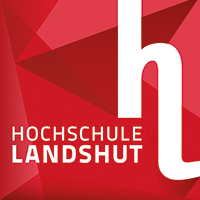Prof. Dr. Sabine Fries, project manager of the new research project on the modernisation of SignWriting at Landshut University of Applied Sciences Hochschule Landshut
As digitisation progresses, there is a growing need to modernise SignWriting: it was invented long before the Internet age. This is where the new project “Digital support for the labour market integration of deaf people” at Landshut University of Applied Sciences comes in. The aim of the research project is to modernise SignWriting and expand professional technical languages, in other words signing for specialist terminology.
The project is receiving 435,388 euros in funding from the German Federal Ministry of Labour and Social Affairs from the “Compensation Fund for National Projects for the Participation of Severely Disabled Persons in the Labour Market” [Ausgleichsfonds für überregionale Vorhaben zur Teilhabe schwerbehinderter Menschen am Arbeitsleben] and is to run until 2024. The project manager at Landshut University of Applied Sciences is Prof. Dr. Sabine Fries. Partners include Airbus Operations GmbH, the Max Planck Institute of Microstructure Physics in Halle, Arbeitsgemeinschaft der Schwerbehindertenvertretung des Bundes, the German Economic Institute (IW), TeleSign Deutschland GmbH and DEAF-IT.
Emojis to improve readability
“Deaf people are severely disadvantaged in their professional lives because they lack solid writing and reading skills”, says Prof. Dr. Sabine Fries, who teaches sign language interpreting at Landshut University of Applied Sciences. Better imagery can, however, make the written language easier to learn. For example, the research team is planning to add familiar comic and emoji images to make emotions easier to represent. The project will also look at expanding the available vocabulary. Instead of one symbol per word, for example, entire sentences are to be assigned a corresponding symbol. This simplification and expansion should make it easier to master SignWriting. “Only deaf people who are able to communicate have a chance of participating in the labour market”, stresses the professor, who is herself deaf. This also applies to specialist or technical signs, which are becoming increasingly important in the world of work as digitisation progresses.
In addition to the modernisation of written symbols and the development of accessible technical languages, workshops for improving written language skills are also to be offered by deaf instructors. Another important aspect of the project is promoting recognition of sign language in general. Including sign-language videos on public websites is one measure to be implemented here. “Such practical solutions are a great help for the deaf”, says Fries.
Contact for scientific information:
Prof. Dr. Sabine Fries





